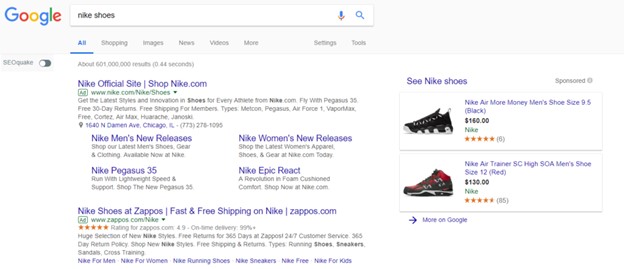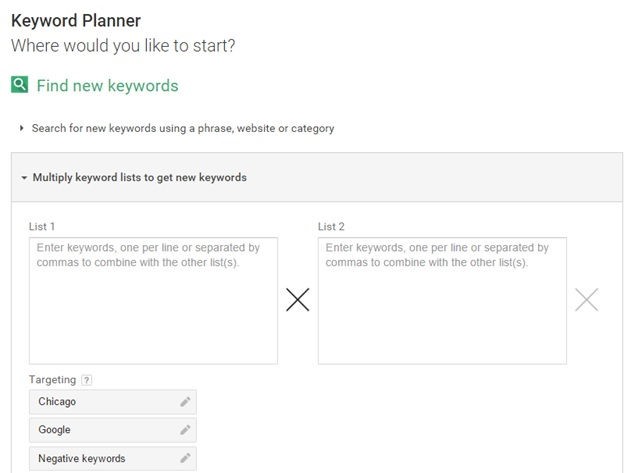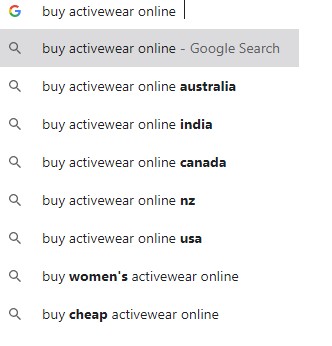The eCommerce store market is booming! And when we say booming, we mean that the industry is all set to touch USD 32 Billion by 2024. While this is excellent news for businesses with eCommerce platforms, it also highlights the importance of digital marketing.
And for local businesses with zero online presence, this is the right time to utilise the benefits of search engine marketing. More than ever before, it’s crucial to ensure you have robust search engine optimisation strategies on hand, allowing you to compete with the large volumes of rival brands out there.
It is vital as only 25% of people will go through to the second page of Google, so sitting beyond page one ultimately means you’re missing out on massive amounts of traffic. If you’re running an eCommerce website, keeping your business on page one also means you’re sitting ahead of the competition that might otherwise land those sales you’re working so hard for.
In this eCommerce SEO guide, we have covered the steps and trends essential for the success of online stores.
So, whether you’re an e-commerce entrepreneur, a marketing enthusiast, or a curious shopper, join us as we explore these eye-opening trends and equip ourselves with the knowledge to navigate the fascinating world of online shopping. Let’s dive in and uncover the latest trends that could shape the future of digital commerce!
#1 – Form a Plan
Are you planning to launch a brand new eCommerce website? Or maybe going to scale the existing business through an eCommerce platform? Well, in both these cases, you will need to come up with a plan. If you are a beginner, you need to search major search engines for the current trends and develop a product or service to sell.
Once you are done writing the business plan, you can focus on sourcing the product or service at optimum cost. Additionally, you need to do the potential customers and competitor research. Once done, revaluate the plan and develop a solid brand name and logo for your online store.
To ensure you have clear and manageable expectations, it is strongly recommended that you engage your paid search agency in advance, making sure they have a proven track record of success with businesses like yours.
They can guide you on the best designs, platforms, and promotional activities that you will need to complete to be successful. The agency will also provide you with working budgets and timelines to manage expectations within your business.
#2 – Build Your eCommerce Site
Ecommerce websites need two components – personal touch and tech stack. It implies that your platform needs proper customisation and necessary features such as a customer help desk, email integration, call tracking, live chat, etc.
While getting a domain and building the web pages seems easy, you still need a proper site architecture to increase customer conversion.
There are plenty of options for businesses looking to get online and sell quickly, but none are better than Shopify. It is a SaaS platform, meaning all maintenance and security updates are managed for you. All you have to do is choose a template, upload your products and images, write a little descriptive copy.
Shopify even has built-in transaction services, discount management and, at its most basic, supports SEO for eCommerce.
Most businesses can get online and set up within a few days to a couple of weeks. Once you are online, you can get your paid search partner like Shout to start driving traffic through Google, Amazon, Facebook and other online channels, driving sales and revenue.
#3 – Drive Traffic
Your SEO efforts will be rendered useless if the target audience cannot find your store in search results. Optimising your store is the key to driving more targeted customers to your online store. An eCommerce website that’s not well-optimised is like opening up a retail store in the middle of nowhere.
Here are some strategies that leading digital marketing agencies use to get on the right track to driving more quality website traffic to their eCommerce store.
SEM
Three types of promotional content: SEO (Organic Search), SEM (Paid Search), and Paid social media must work collaboratively to ensure consistency of messaging, ensuring that you are effectively targeting your core consumer personas.
Therefore, it is highly recommended that you work with a single, multi-talented web marketing agency.
SEM targets customers when they are searching on Google or parts of the Google network like YouTube. These ads are based on semantic keywords and key phrases shown to audiences based on the relevancy plus the amount you are willing to pay – CPC rate or cost per click.
SEM can have a high price because it attracts customers when they are most interested and most likely to purchase, thus increasing your eCommerce revenue.
Re-Marketing
Once you have a base of SEM data, you can start to re-market to users who have been to your own site but have not made a purchase. It gives you a second chance to convince them to return to your eCommerce site and buy from you.
Of course, this data can be used for multiple re-marketing campaigns so you can test numerous messages to see what resonates, making your digital marketing more effective over time.
Get Even More Website Traffic with Email Marketing
The number of backlinks doesn’t determine the success of a website. You measure a site by the total sales you receive and the number of repeat buyers. A well-planned email campaign will help drive repeat organic traffic to your website.

Google Shopping Ads
In addition to the text and re-marketing ads offered by Google, you can also set up a product feed directly from your site to sell your products. This feed shows at the top of the search engine results and supersedes all other listings. Your click-through rate naturally sees an organic rise in increasing your search rankings.

Amazon, eBay and Other Third-Party Sales Channels
Out of the box, Shopify lets you set up and product feed for multiple third-party sales channels. It allows you to extend your sales network at a minimal cost, managed by a single supplier.
Social Media Marketing
Social media ads are channel-specific and are designed more as an interruption-based ad format. Present in between social posts, such ads can provide meaningful traffic to your site. But they are most effective when running an omni-channel campaign where you need your brand to be seen at times online.
Leveraging your customers’ email addresses into a ‘lookalike’ audience makes your social ads more effective in reaching customers similar to those who have purchased from you in the past.
How to Increase Ecommerce Sales with Facebook & Instagram Ads?
Facebook advertising is a great way to draw more traffic to your e-commerce store. Facebook ads have a lower cost per click than Google display and search ads for many industries. If your goal is to boost sales quickly, Facebook ads are a good start.
Both Facebook and Instagram are visual social networks. Therefore, marketing ads on their networks do well because customers can visualize how the product would look for them to use.
For example, if you’re selling ornaments, your marketing plan should target women who have an interest in fashion. Grab their attention with jaw-dropping jewellery you have to offer. Then direct them with a link to your eCommerce product pages so that they can finalize the purchase.
#4 – Aim for Long-Term Organic Growth
Once you have launched your site and started to drive traffic through SEM and social media, it’s time to consider your more long-term growth objectives. Ecommerce SEO means optimizing your site code, content and structured data so that your site appears on the first page of search results after the paid ads.
If eCommerce SEO is done correctly, some retail businesses have seen growth as high as 500% or more year on year. So, early on, investing in an eCommerce SEO strategy should be part of any digital marketing plan.
As your organic traffic gets stronger, your SEM traffic can take up the slack in other areas where you are underperforming or simply increase your share of voice over your competition.
We know there’s a lot to the eCommerce SEO industry, and it can be overwhelming. But it doesn’t have to be. Here are all the components that make up your eCommerce SEO strategy.
Ecommerce Keyword Research
Relevant keywords are exact terms that your users put into search engines to find your products and/or services (or your competitor’s). They can be single words, long-tailed phrases, or short. Think of how you search for something these days; more often than not, it’s a question or a long-from sentence.
Google AdWords has the built-in Keyword Planner, which is your prominent first port of call to help build up your target keyword or phrases list.
You can then use the high search volume phrase – primary keyword, across your more comprehensive ecommerce SEO campaign strategies like content marketing or social media posting.

For example, if you sell activewear, you could look at longtail keywords like ‘cheapest activewear Australia’, ‘best activewear’, ‘buy activewear online’ or ‘best value activewear”. Even a simple Google search will give you a list of options that people are commonly looking for.

They can also get precise, which is how you can link your competitive advantage to consumers looking for your specific product. In the case of activewear again, it could be search phrases like ‘organic activewear products’, ‘activewear products that are breathable’, ‘best activewear for cross-training’ and other specific phrases.
Optimise URLs for Ecommerce SEO
You should optimise all of your URLs for SEO, especially your product pages, blogs and articles. It can help Google analyse your website and correctly link your pages to search queries, which will enhance your traffic and leads. Some tips on optimising your URLs include:
- Describe your content
- Include the keywords
- Keep the URL simple
- Use lowercase letters
- Structure your website
Include Header Tags
Articles always have a main heading and subheadings to maintain site structure. In Ecommerce SEO terms, these have HTML titles called heading tags, and they actually have a far deeper purpose.
For Google, these tags let the search engine know what your page is about, what the body of the content is relating to, and the keywords involved.
You can see why all this is so important to include when writing up content optimised for eCommerce SEO. You use header tags to rank these headings and subheadings from H1 to H6. H1, i.e. the title tag, is obviously the most important and reserved for the page’s primary headline or article, with all other subheadings ranked accordingly.
Add Internal Links
There are two primary reasons why internal linking is essential. Firstly, it helps visitors navigate their way through your page and secondly, it helps provide the search engine with a similar map so that Google searches work in favour of ranking factors for your content.
Internal linking is simple; all you need is to hyperlink sections on one page that refer to another page. Ensure there are no spammy links.
Additionally, you must add relevant media for Google image search, meta tags, and anchor texts to take care of the technical SEO.
#5 – Optimising Your Growth Through a Single Paid Search Partner
SEO, SEM, and Paid social media are all designed to work together, so it is critical to the effectiveness of your digital marketing and the cost. Therefore, you should look for a well-respected eCommerce SEO agency in Melbourne that focuses on customer needs and establishes your position in search engine results pages.
Have specialists working together who know the latest ecommerce SEO tools, trends, and how to get the most out of them. Hence, you will notice the growth of your business online for the most effective price compared to other website owners.
Creative Ecommerce Trends to Watch Out for
Want to leverage the power of the internet and create a mobile-ready eCommerce store that integrates well with your enterprise eCommerce SEO services and offers convenient service? Use these 6 creative trends to wield the World Wide Web to your advantage.
-
Voice Shopping
Voice search is quickly going mainstream. While text-based search still rules, it’s anticipated that voice search will eventually become the primary means users navigate search engines within the coming decade. As this transition from text search to voice assistants occurs, voice shopping is also is growing in popularity.
-
Mid-Year Sales
Black Friday is the busiest shopping day in America and marks the start of the lucrative (for retailers and other sellers) holiday season. It accounts for more than a third of many retailers’ annual revenue. On the other hand, July is one of the quieter months in retail.
Why is this important? Black Friday is associated with phenomenal discounts, thus signalling buyers that they are getting a great deal. Black Friday in July is quickly taking root as an established trend. You can take advantage to promote your business and draw new customers.
-
Border-Free Ecommerce
A business is as good as its target audience. Why limit yourself to geographical boundaries due to local SEO when you can go global and rule the online world with search results? The absence of borders means many customers are open to buying from an overseas website.
It is driven by a quest for better prices, greater variety and higher quality products. But creating an eCommerce site that is amenable to borderless commerce requires deliberate, well-thought-out action.
You have to embark on competitor research around the requirements, develop a comprehensive plan and create a platform that supports the diversity of currencies, taxes and languages that serve an international audience.
In particular, pay attention to the local perceptions in different markets, an efficient and secure logistics system, local payment options, regulatory requirements, local quality standards, refunds and product exchange processes, and after-sales service.
-
Augmented Reality
Imagine buying shoes. But you don’t know how well they’ll suit your new outfit? What if you could somehow bring both those elements in a single picture?
One of the biggest impediments to ecommerce is buyers’ inability to visualise a product. The sensory elements that help consumer decision-making in brick and mortar stores are virtually lost online.
Augmented reality (AR) is tackling this challenge by bringing life to the customer’s imagination. It can help people search for the right product and compare it to other websites.
-
Influencer Marketing
In an era where online fake news makes it hard to distinguish truth from fiction, people increasingly turn to influential persons to set them on the right path. As people trust people over brands, eCommerce sites are turning to influencer marketing to grow their profile and boost their sales.
To maximise the return on influencer marketing, identify an influencer who has sway over your target market, invest in content marketing, and then measure the eCommerce SEO performance.
-
Subscription Box
The subscription box is a rapidly growing phenomenon to ensure positive results due to eCommerce optimisation. A store sends its customers a package of items they’ve curated. The content of the subscription box may include everything from kits and cosmetics to pet products and fashion. The box plays on the delight in a pleasantly unpredictable surprise.
For the subscription box to work, you must know your audience, personalise the box in line with your audience’s needs, and use data derived from Google Analytics reports to deliver superior experiences.
Bottomline
It may shock you to learn that while it all seems quite simple, many of your opposition websites will not be taking the time to focus on search optimisation. But eCommerce SEO services hold enough potential to structure your marketing strategy, thus improving your ranking in organic search results.
Contact our eCommerce SEO firm to help you pave the stepping stones to success, and if you need an extra hand, remember our SEO experts from Sydney are always on hand to help. If you want to multiply your sale by 2x, 5x, 10x, and 100x, speak to one of our growth experts to get an X-Chart in just one consultation. And the kicker? We guarantee it!
